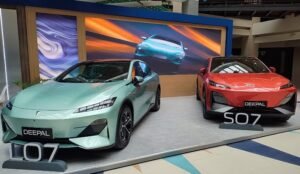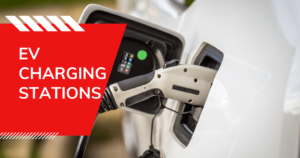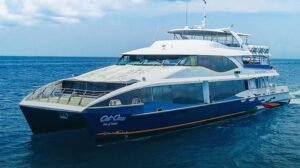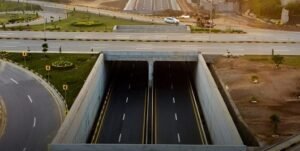

Elon Musk’s Robotaxi Rollout in Austin: Visionary Leap or Urban Risk?
Tesla’s long-anticipated public Robotaxi pilot is expected to launch in Austin, Texas, in late June 2025, deploying a limited fleet of 10 to 20 Model Y vehicles. These vehicles will feature Tesla’s latest Full Self-Driving (FSD) software and operate entirely without human drivers.
Tesla is pursuing a camera-based “vision-only” system for its self-driving cars, moving away from more expensive LiDAR sensors used by competitors like Waymo and Cruise. This approach, according to Elon Musk, is more scalable and mimics how humans navigate roads.
Cutting Costs with AI-Driven Dispatch
Tesla aims to revolutionize ride-hailing through a seamless app experience. Riders will book a Robotaxi via the Tesla app, and the vehicle—without a driver—will arrive at their location. Each Robotaxi will communicate with Tesla’s central network for navigation, real-time updates, and software enhancements.
Owners of eligible Tesla vehicles will also be able to add their cars to the fleet when idle through the “Tesla Network Sharing” concept. This opens the door to passive income for Tesla owners, with Musk predicting hundreds of thousands of such vehicles in circulation by 2026.
Removing human drivers from the equation, Tesla plans to offer fares significantly cheaper than current services like Uber and Lyft, making urban mobility more affordable and accessible. Additionally, as all vehicles will be electric, the Robotaxi fleet contributes to zero-emission transportation goals.
Regulatory Hurdles & Safety Concerns
Despite advancements, Tesla’s Robotaxi vision still faces major regulatory challenges. Although Texas laws allow relatively flexible local regulation of autonomous vehicles, federal bodies like the National Highway Traffic Safety Administration (NHTSA) are investigating Tesla’s FSD system over safety concerns.
Edge-case scenarios such as unexpected pedestrian behavior, bad weather, or emergency situations continue to pose hurdles for full autonomy. Critics argue that Tesla’s vision-only system may not be ready for real-world complexity on a large scale.
Potential Shockwaves for the Industry
Tesla’s Robotaxi launch could have widespread impacts on both the transportation sector and the job market. Ride-hailing services, taxi companies, and millions of professional drivers may face significant disruption. While automation could lead to job losses, Musk argues that the societal gains—in the form of fewer accidents, cleaner air, and more efficient commutes—will outweigh the costs.
Additionally, Tesla promises that its system will be inclusive, offering enhanced mobility options for people with disabilities and those living in underserved urban areas.
Analysts Watch Closely
Market analysts are cautiously optimistic. Some firms project a slow ramp-up, estimating around 2,500 Robotaxis on roads by 2027. Others warn that regulatory red tape, public trust, and technical limitations may delay broader adoption.
Investor response has been mixed. While tech enthusiasts and early adopters are excited, institutional analysts note that Tesla’s Robotaxi ambitions are still unproven at scale. Tesla stock has seen modest movement following related announcements, signaling a wait-and-see attitude from Wall Street.
Tesla’s Austin Robotaxi pilot, set for late June 2025, may mark a historic shift in how cities manage mobility. With a fleet of self-driving vehicles powered by cutting-edge AI and full self-driving software, Tesla is pushing the boundaries of what urban transport can become.
If successful, the Robotaxi program could democratize access to affordable, sustainable transportation and set the stage for an autonomous future. But without careful oversight, robust safety protocols, and public transparency, it could also raise new challenges for equity, employment, and road safety.
The world is watching. Will 2025 be the year of the autonomous revolution—or a reality check on tech’s boldest promises?
Disclaimer
This article is based on publicly available information and credible reporting as of June 2025. Timelines, operational details, and projections are subject to change as regulatory decisions, software developments, and real-world testing evolve. Readers should follow official announcements and local authorities for the most current information.
Afsheen Gohar is a seasoned writer with a wealth of experience in crafting authentic and well-researched articles. Her dedication to delivering high-quality content is evident in her work, where she combines a passion for storytelling with a commitment to accuracy and depth. Afsheen’s writing reflects her ability to engage readers with compelling narratives while providing valuable insights on a diverse range of topics.
Add a comment Cancel reply
Categories
- Auto News (1,389)
- Bike Launches (27)
- Car Launches (68)
- Car Prices (39)
- Car Reviews (9)
- Easy Installments (78)
- Electric Vehicle (62)
- Electronic Bikes (43)
- Motorcycle Prices (11)
- Motorcycle Reviews (7)
- Other News (43)
- Uncategorized (51)
Recent Posts
Popular Tags
Related posts


Pakistan Approves Rs. 53 Per Unit Subsidy for EV Charging Stations

China Launches Gezoba: The World’s Largest Electric Cargo Ship Powered by Lithium Batteries

Pakistan and Turkiye Strengthen Maritime Cooperation with Plans for Ferry Service and Gwadar Investments
Welcome to Auto Power, Pakistan’s premier destination for motorcycles, scooties, and electric bikes. Additionally, our website keeps you updated with the latest news from the auto sector, ensuring you stay informed about the newest trends, releases, and advancements in the industry.
- Shop No 05 & 06, Ruby Arcade, A.M.20, Frere Road/Off Akbar Road, Karachi.
- Shop Timings 11:00 AM to 8:30 PM
- 0322-2578859 | 021-32717777
- sales@autopower.com.pk
- Shop No 05 & 06, Ruby Arcade, A.M.20, Frere Road/Off Akbar Road, Karachi.
- (+92) 322-2578859
- sales@autopower.com.pk
Latest News
- All Posts
- Auto News
- Bike Launches
- Car Launches
- Car Prices
- Car Reviews
- Easy Installments
- Electric Vehicle
- Electronic Bikes
- Motorcycle Prices
- Motorcycle Reviews
- Other News
- Uncategorized






© 2025 AutoPower All Rights Reserved.






